The 7 best foundations for combination skin that give your complexion a little bit of everything
These versatile foundations won't cling to dry bits or melt off oily ones - with options for all budgets
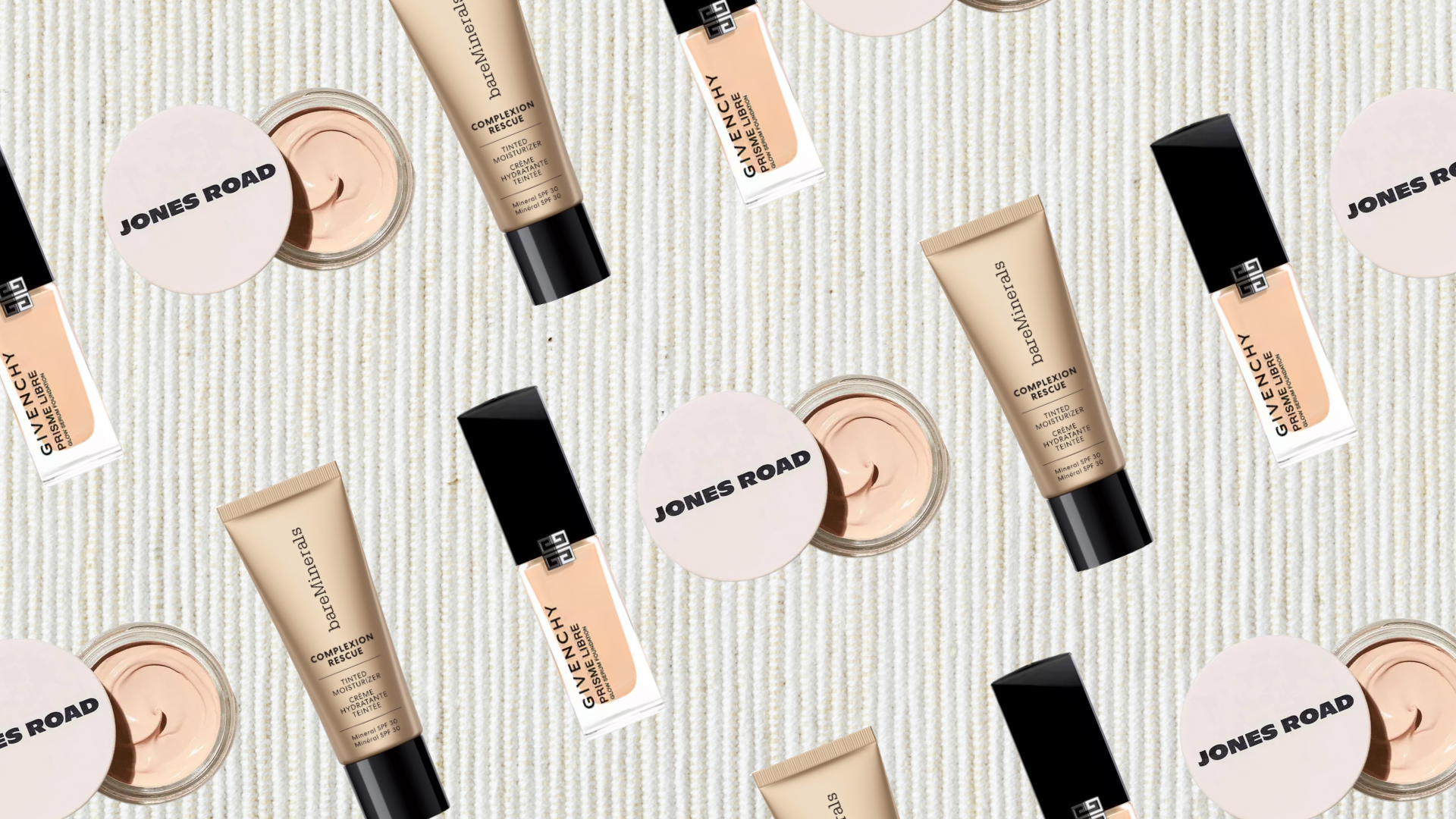
What makes the best foundation for combination skin? It might be easier to start with what doesn't work. A matte finish will highlight dry patches, while purely dewy options will add unwanted shine. What we need is a perfect hybrid of the two, but it's not always easy to find in the same base.
“When it comes to combination skin, one of the biggest challenges is finding the best foundation that will stay put in the oily areas but won’t dry out the skin,” agrees Amy Conway, Bobbi Brown Global Pro Artist. Her top tip? “Opt for water-based formulas as they can be built up to give flawless coverage but can also be blended out for a lightweight, fresh-faced look."As for the finish, “it’s usually a safe bet to go for a satin finish as it sits perfectly between matte and dewy,” adds Aimee Connolly, Makeup Artist and founder of Sculpted by Aimee. “I’d also suggest steering clear of anything heavily fragranced or with a high oil content as they can further exaggerate problem areas on the skin,” warns Connolly.
From all-new formulas to cult classics, we've tested dozens of foundations for combination skin to curate this edit of picks that really do their job. What’s more, we have expert makeup artists to answer all your questions surrounding foundation…
The best foundation for combination skin, chosen by our beauty team
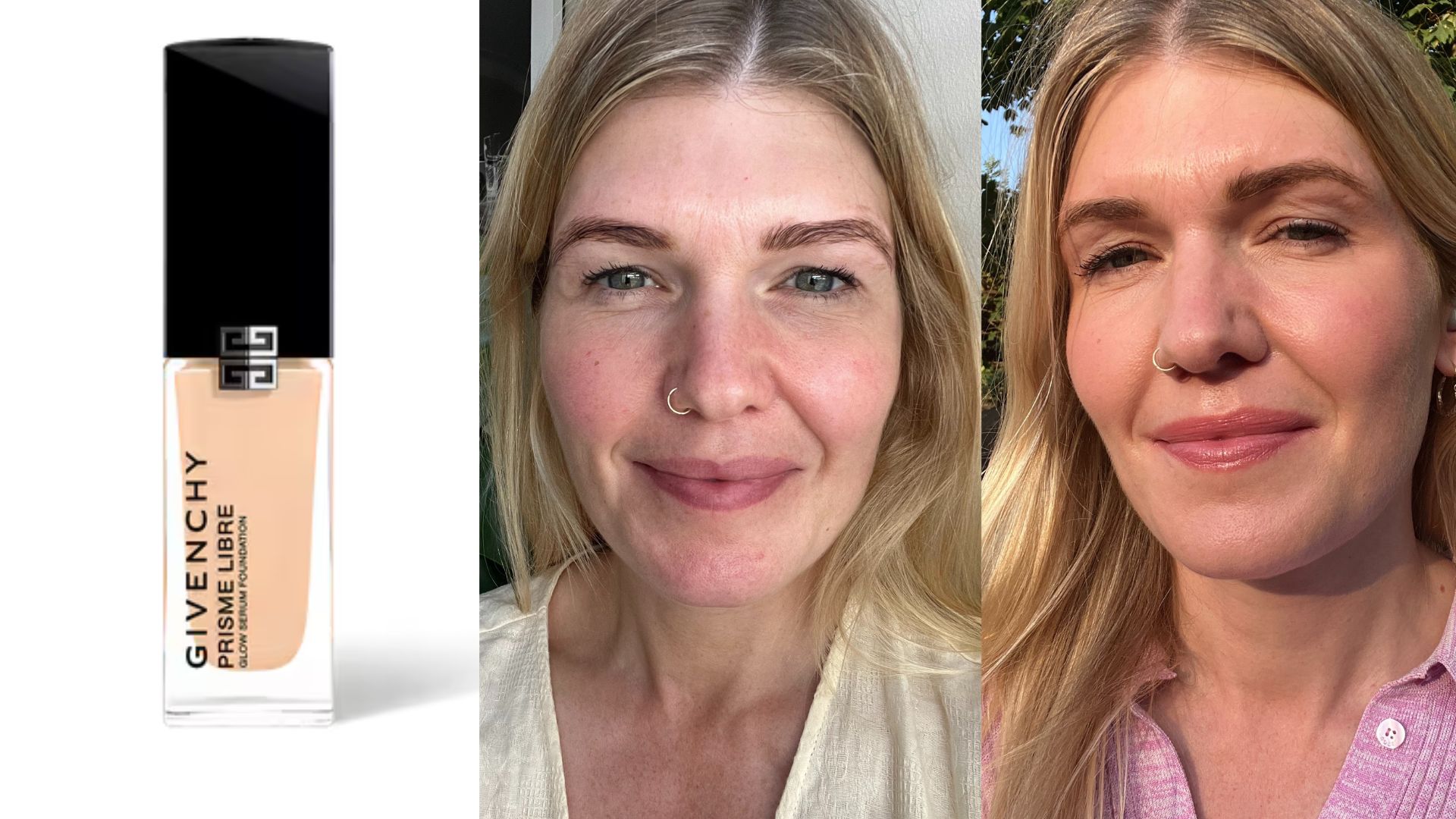
RRP: £48 | Texture: Liquid | Shades: 30
Tested by: Beauty Channel Editor, Fiona McKim
I know, I know, this is on the spendier side - but it truly is worth it. The main descriptor I'd apply to it is 'grown up' - meaning it's a highly sophisticated formulation, with medium coverage, packed with beneficial ingredients, in a beautiful glass bottle that is just asking to be sat on a proper dressing table.
In terms of benefits for combination skin, there are so many. It has a slippery, spreadable texture that glazes the skin and makes dry parts of the face look super juicy. But, crucially, it has enough robustness about it to sit happily on an oily chin, or nose, or forehead without giving up the ghost. It's very buildable, so one coat gives a medium wash of pigment, and a second helping will give a more polished and perfected look. It also contains skincare ingredients at decent levels, such as ceramides and hydrating hyaluronic acid, at a tiny weight that can absorb deeply, for a fresh, plumped finish.
Pros
- Beautiful finish
- Lasts extremely well
- Radiant finish
Cons
- A pricy buy
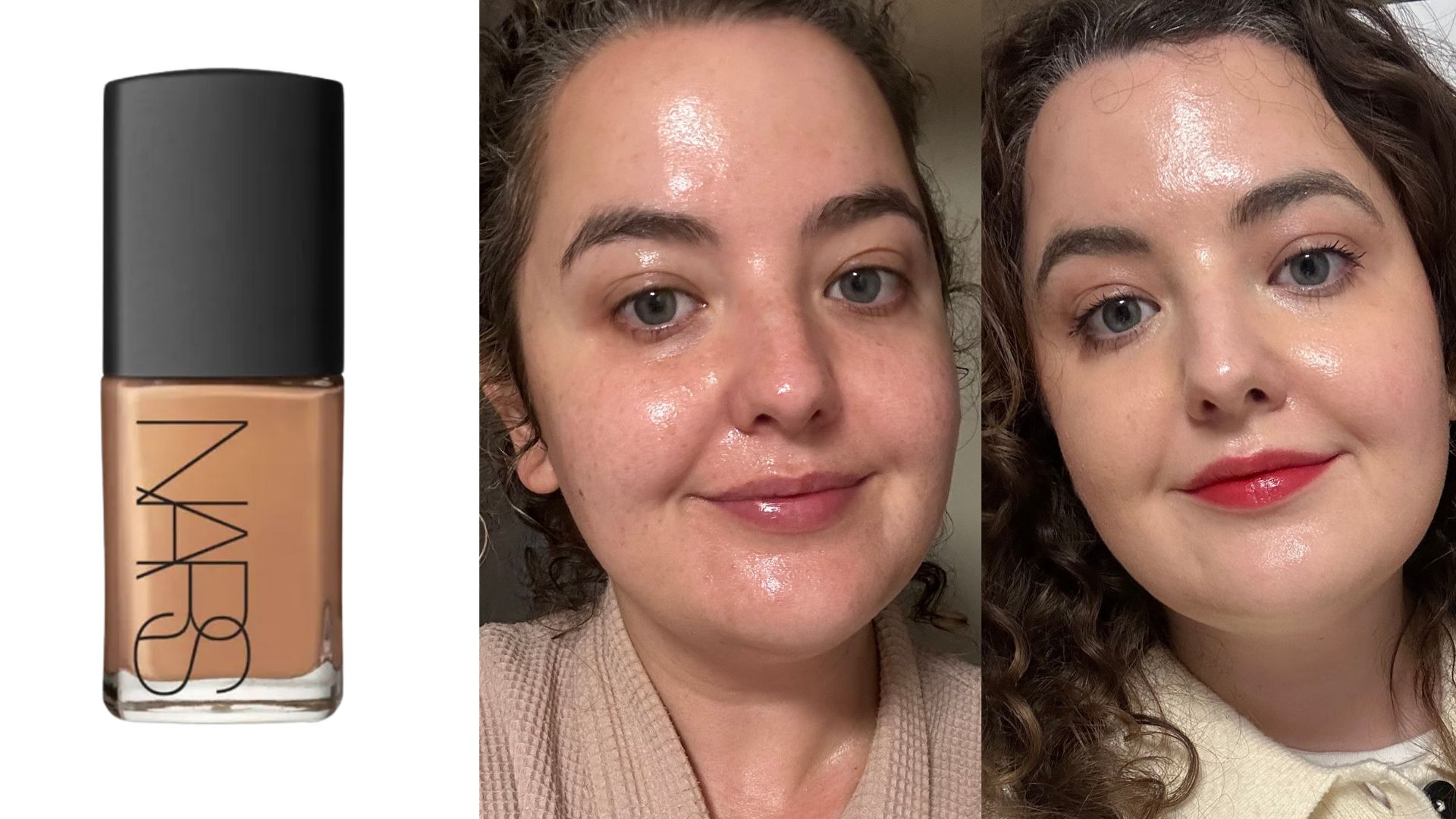
RRP: £39 | Texture: Liquid | Shades: 40
Tested by: Senior Beauty Editor, Rhiannon Derbyshire
If you prefer a radiant base over a matte finish, give this Sheer Glow Foundation from NARS a go. It’s a brilliant all-rounder that’s loved by beauty editors and makeup artists alike for its long-wearing, easy-to-build formula that’s available in 40 versatile shades. It’s also suitable for every skin type – including combination. Although it’s dewy, it’s not too dewy, meaning it can stay put on oilier complexions without exacerbating shine. The overall finish is a subtle glow that makes skin look healthy and radiant.
If it’s a wet look, glass skin finish that you’re after – look elsewhere. But for a sheer glow that’s luminous and radiant, this is the foundation for you. For a super natural-looking finish, we recommend warming up the foundation in your hands before pressing it into the skin with your fingertips. Our top tip? Less is more with this foundation. As for the formula, it’s laced with brightening turmeric extract alongside powerful antioxidants to protect the skin against free radicals. As we said, a brilliant all-rounder.
Pros
- Contains skincare ingredients
- Doesn't settle into fine lines
- Radiant finish
Cons
- Have to buy pump separately
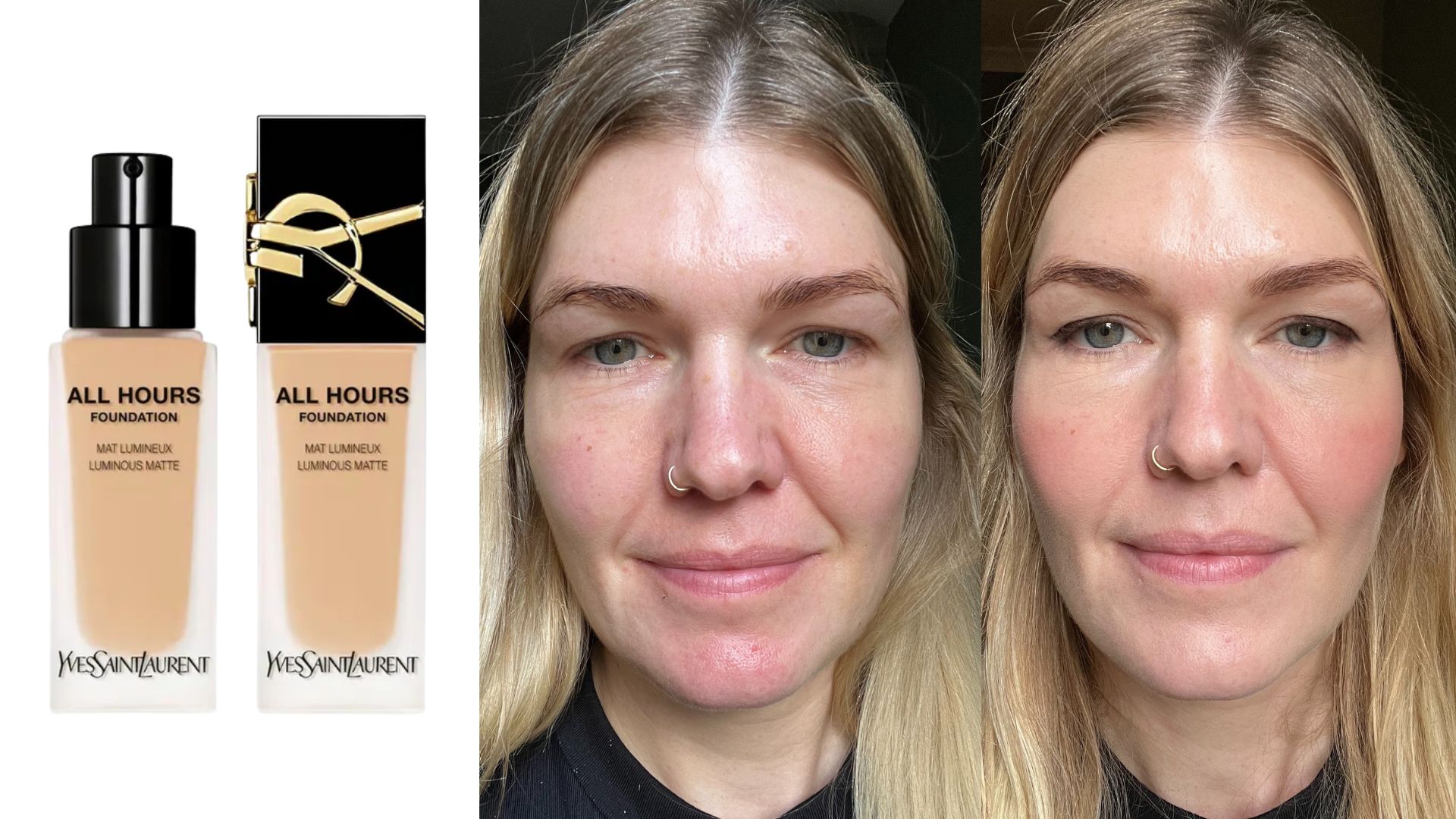
RRP: £39.50 | Texture: Liquid | Shades: 40
Tested by: Beauty Channel Editor, Fiona McKim
The best hyaluronic acid products are not solely skincare products. More and more makeup staples star this ingredient too. Take this All Hours Foundation from YSL, for instance. The new and improved formulation now features hyaluronic acid to hydrate and smooth skin. A great pick for the winter months, when skin is starved of moisture, this nourishing formula feels moisturizing and lends skin a fresh (and flawless) finish.
Like the original, it’s long-wearing – promising 24 hours of full, matte coverage. And while we can’t attest to the 24-hour claim, we can confirm that it stayed put from our morning coffee through to our afternoon Zoom calls without migrating. By the evening, the foundation had settled into our fine lines – but it was nothing a quick touch-up using a sponge couldn’t fix. Overall, this is a great full-coverage formula that doesn’t feel too heavy, and, unlike some other full-coverage foundations, this one’s easy to blend. We also appreciate the addition of SPF 39 (which is higher than most).
Pros
- SPF 39
- Oil-free formula
- Long-lasting
Cons
- Can settle into fine lines
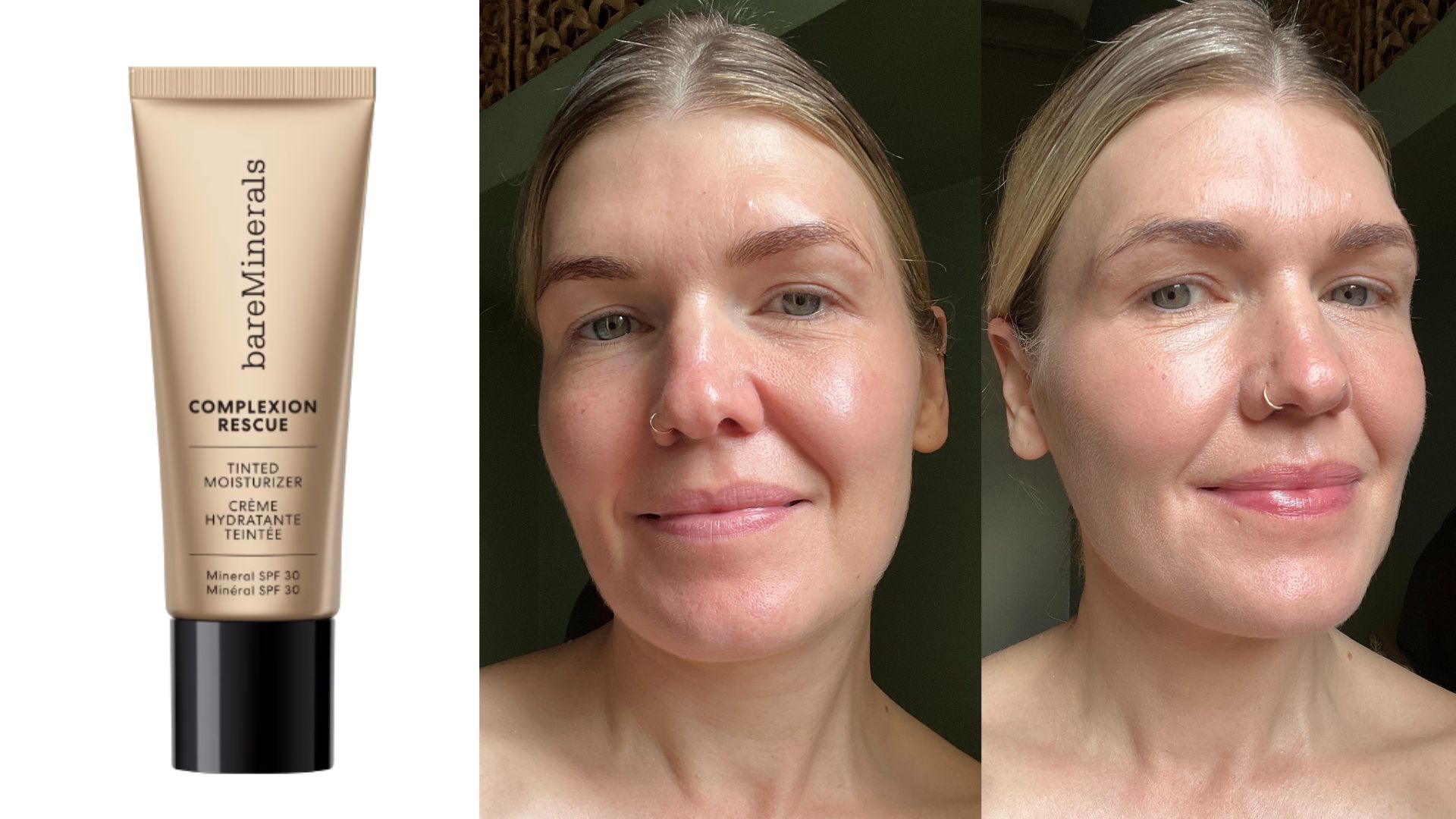
RRP: £39 | Texture: Tinted gel | Shades: 20
Tested by: Beauty Channel Editor, Fiona McKim
Just because you've got combination skin, that doesn't necessarily mean you always want to wear a high coverage foundation simply to deal with oily bits. I'd also argue that glow is a positive attribute in any base - even one for oily or combo skin types. Enter: Bareminerals Complexion Rescue.
The clue is in the name with this base, which is a light gel-cream texture and can be applied and blended easily with fingers (or use a sponge if you prefer). The gel and water-based formulation is ideal for combating congestion and is completely oil-free. This has fairly sheer coverage, with hyaluronic acid to draw moisture into the skin, so it makes a nice option for makeup-light days. Although the finish is quite radiant, I didn't find it too much on my shine-prone skin, but there's always a dab of powder on the T-Zone if needed.
Pros
- Sheer, radiant coverage
- Gel, oil-free formula
- Easy blending
Cons
- Could be too glowy for some
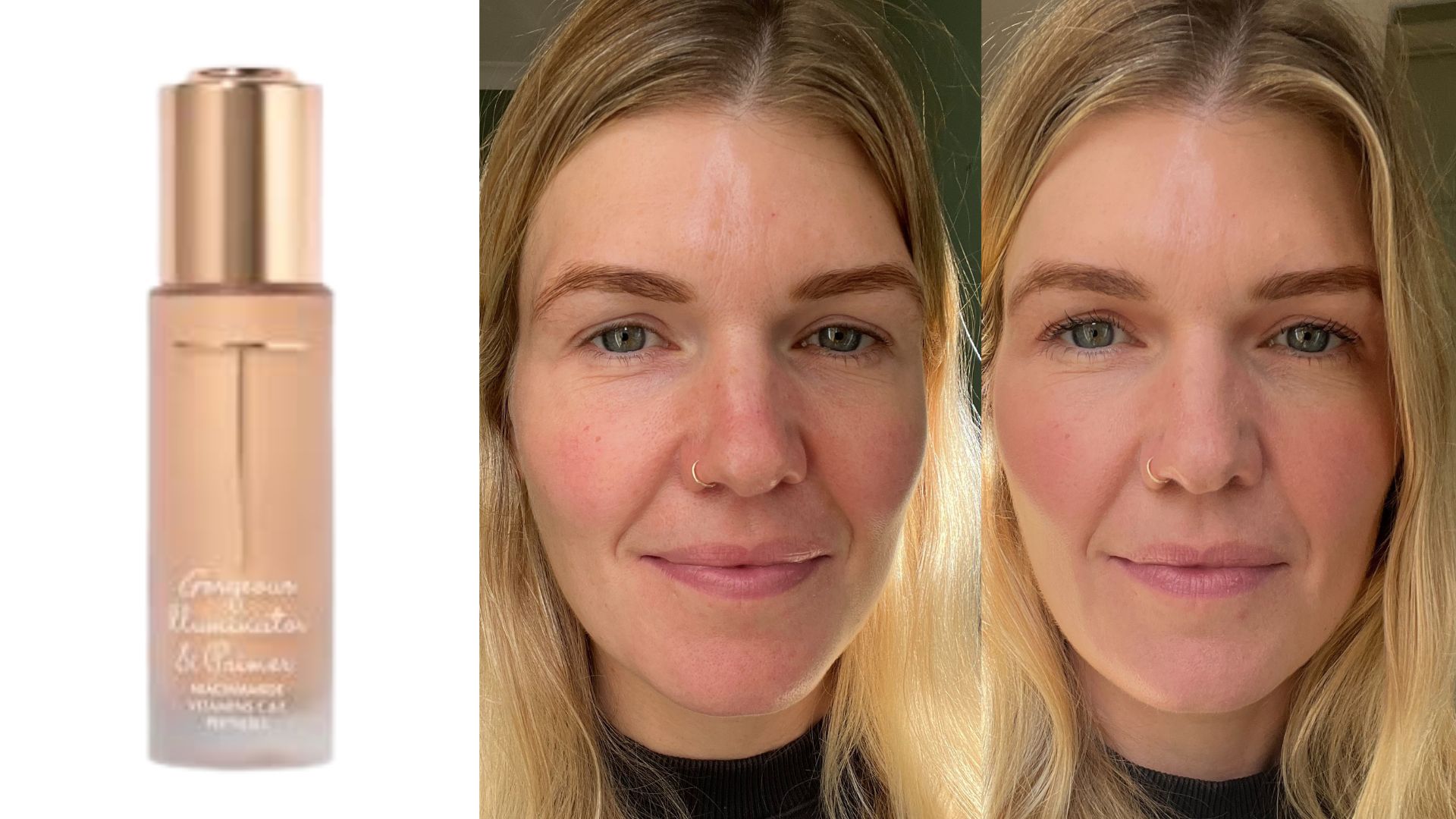
RRP: £58 | Texture: Liquid | Shades: 14
Tested by: Beauty Channel Editor, Fiona McKim
This foundation is a bit of a cult classic, by an industry-favourite makeup artist who truly knows her stuff. It has a relatively runny, silky, water-like texture that is extremely easy to apply from the doe foot applicator. We found using a dense domed brush best for buffing it in and creating a really beautiful finish.
The coverage is medium-level, and the finish sits somewhere between matte and dewy, which is ideal for anyone with combination skin. The inclusion of some powerhouse skincare ingredients gets a big thumbs up from us as well - particularly niacinamide, which is an all-round skin conditioner that also helps control oil. The finished effect after applying is fresh, youthful and not in any way mask-like.
Pros
- Serious skincare prowess
- Long-lasting
- Healthy-skin finish
Cons
- More expensive than most
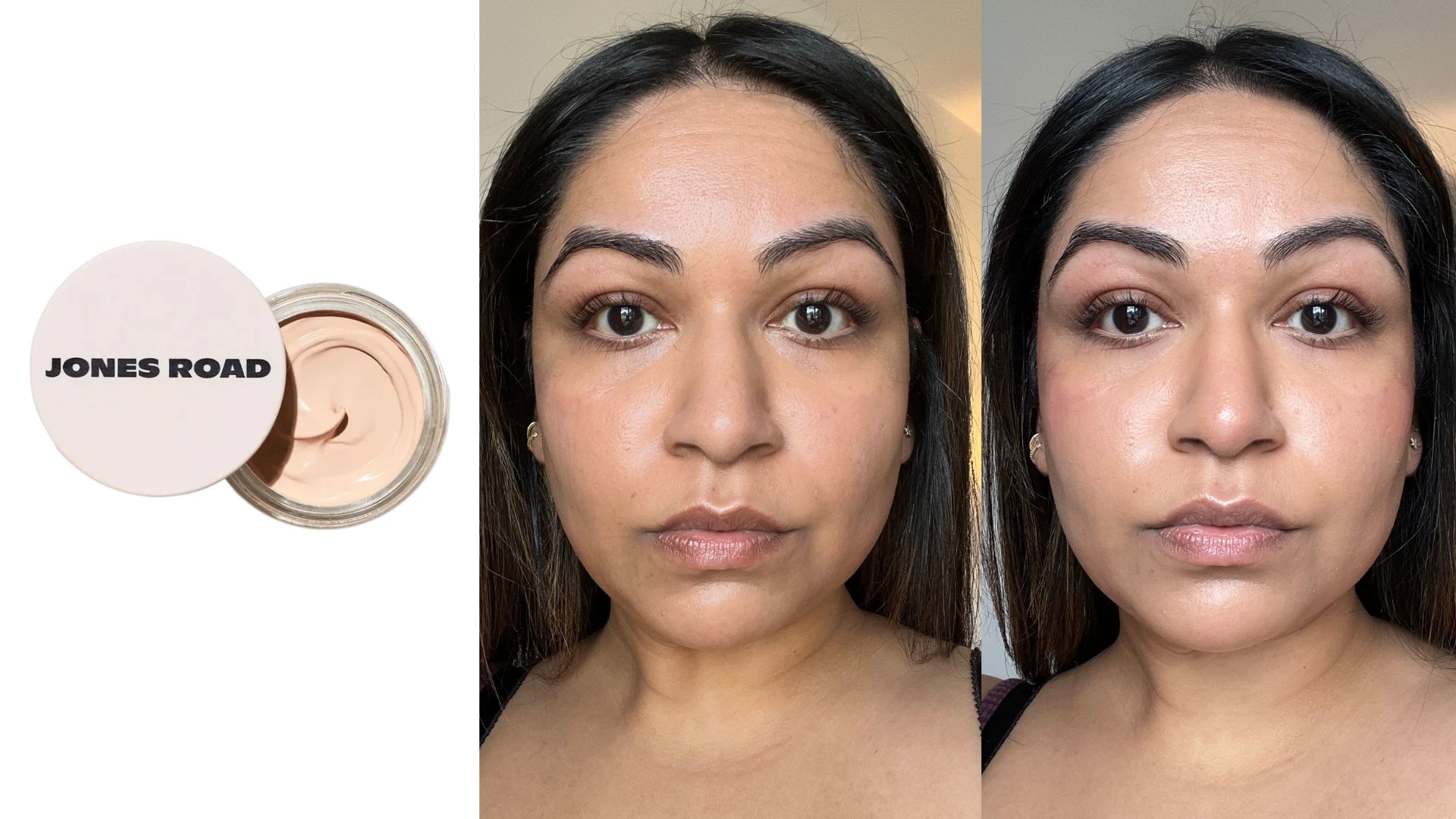
RRP: £42 | Texture: Balm | Shades: 16
Tested by: Beauty Ecommerce Editor, Aleesha Badkar
After going viral on TikTok, we were delighted to see What The Foundation from Bobbi Brown’s brand Jones Road land on UK soil in early 2022. In keeping with the makeup artist's preference for a natural aesthetic, this foundation balm is designed to give skin a light veil of dewy coverage that looks like your skin on a good day. Intrigued? Housed in a glass jar, the formula has a thick, buttery texture and strong (but, in our opinion, pleasant) scent. To apply, we recommend opting for your best foundation brush to buff in a light layer.
Glow is the aim of the game with this oil-based foundation that’s loaded with moisturizing jojoba oil and sodium hyaluronate. For our tester’s combination skin, which errs on the dry side, this balm wasn’t too oily. Once applied, skin looked healthy with a subtle sheen. By the evening, it was clear to see that the coverage had worn off, but we still detected a glow. If your skin is on the oilier side, we’d advise against this foundation as it can migrate and highlight shine.
Pros
- Natural-looking finish
- Easy to blend
- Moisturising formula
Cons
- Oil-based formula not for everyone
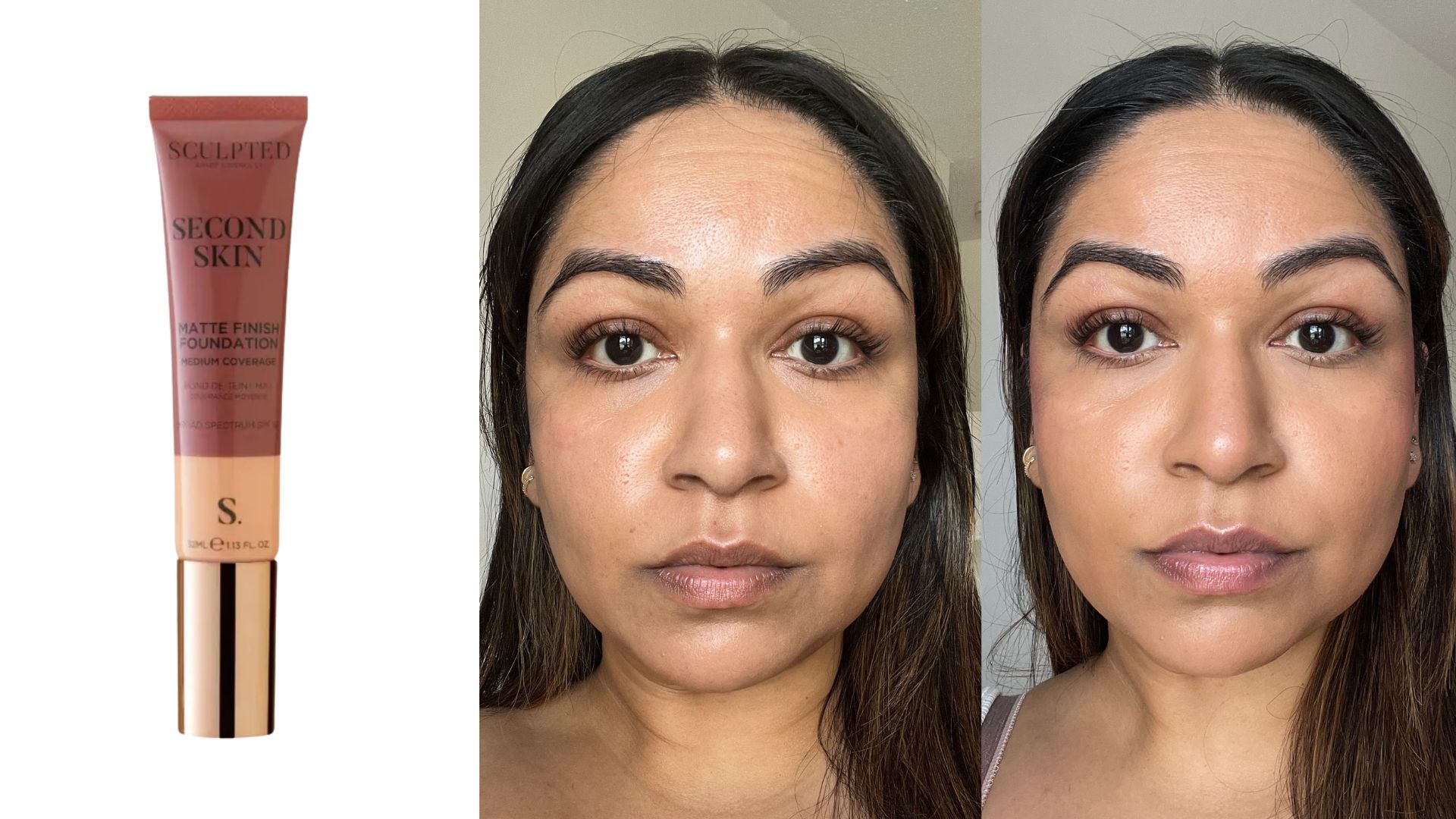
RRP: £25 (UK & Ireland only) | Texture: Liquid | Shades: 17
Tested by: Beauty Ecommerce Editor, Aleesha Badkar
This matte, mineral foundation is a great choice for combination skin types as well as anyone following a skincare routine for sensitive skin. “I often reach for this foundation for combination skin as it’s oil-free so will not add any extra shine to oily areas, but as it’s packed with skin-loving ingredients such as hyaluronic acid and aloe vera extract, it will also keep the skin hydrated and nourished,” says Connolly.
Although the coverage is medium-to-full, we found that this foundation has a lightweight texture that’s easy to blend in. We love how it looks on our skin – disguising redness and concealing blemishes while leaving behind a velvet-matte finish that’s akin to a real-life Instagram filter. While some matte formulas can be drying, this one is not. Our skin still looked luminous without becoming shiny. Our only gripe is that the coverage had worn off by the end of the day. To boost its staying power, try spritzing a fixing mist, like our fave Urban Decay Setting Spray, on top.
Pros
- Non-comedogenic
- SPF 50
- Hydrates and calms skin
Cons
- Moderate staying power
How we tested the best foundation for combination skin
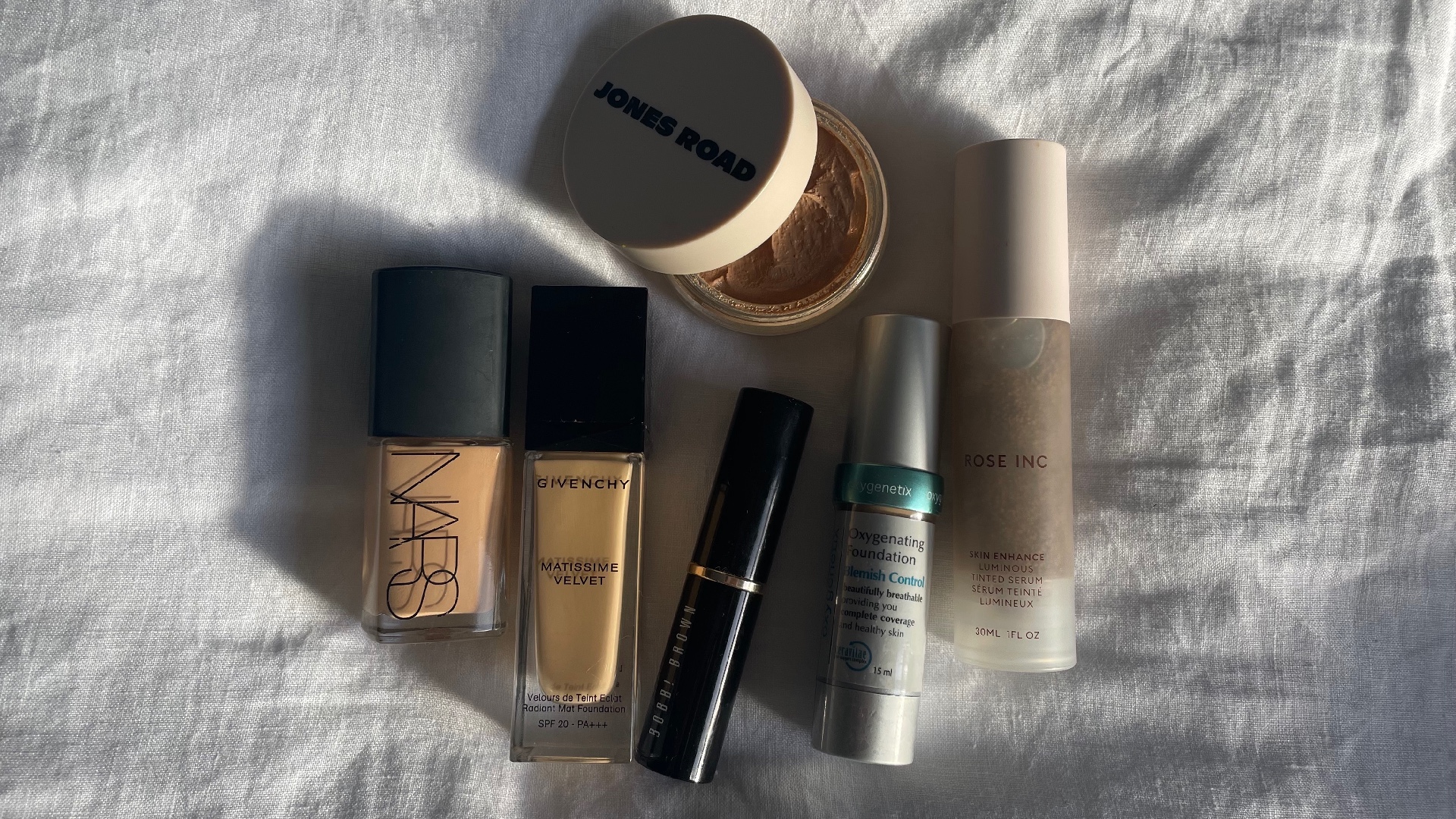
A selection of foundations that Emma tested for this guide
To help find the best foundations for combination skin, we tried a variety of different formulas with different price points - from high-end to drugstore. In order to achieve a high score, each foundation had to cater for both dry and oily skin types, paying close attention to how well each product lasted - whether they creased, settled into fine lines or began to oxidise.
The products that made this edit championed longevity, ease of application and the finished outcome. We applied each foundation in the morning and tested it for a full day’s wear, without touching it up, to see how well it performed.
How to apply foundation on combination skin
“To ensure you get the coverage you’re after, that lasts all day, layer a primer under your foundation,” says Conway. The best primers act as a protective barrier between skin and makeup. “On oily skin, primer stops the oil from seeping through and making makeup slide,” continues Conway, “and on dehydrated areas, it stops makeup from going patchy.”
To take it one step further, Connolly suggests investing in two types of primer. “Go for an oil-controlling primer to mattify areas prone to shine and an illuminating primer for dry areas to add a luminous boost and extra hydration.”
When it comes to tools, Conway recommends using a brush to apply your chosen foundation. “No matter how clean your hands are, you still have natural oils on your fingertips, which can make the skin oilier and makeup slide. When applied with a brush, you create the most flawless coverage that will last,” says Conway.
Sign up to our free daily email for the latest royal and entertainment news, interesting opinion, expert advice on styling and beauty trends, and no-nonsense guides to the health and wellness questions you want answered.
Emma Stoddart is a freelance beauty journalist and self-confessed skincare aficionado with over five years’ industry experience. Emma has worked for some of the UK’s top women’s titles including Net-A-Porter, Stylist and Grazia. Her experience spans online and print as well as producing editorial shoots with some of the industry’s biggest artists, including Val Garland. Asides from working with them behind the scenes, she’s also had the chance to interview the likes of Patrick Ta, Pat McGrath, and Sam McKnight for all their insider tips and tricks.


